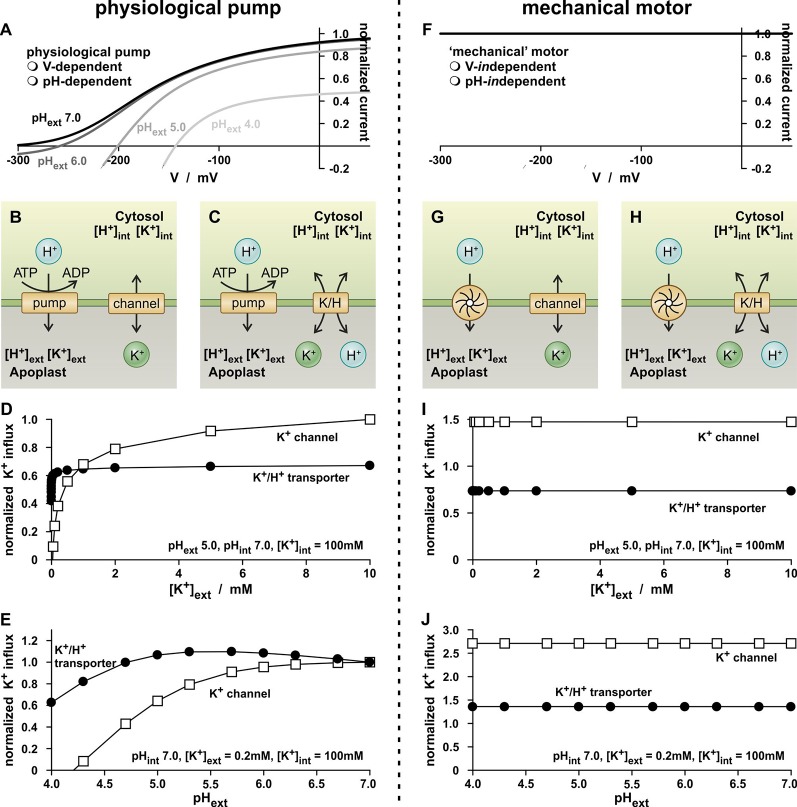Figure 2.
Simple physiological K+-uptake circuits. (A–E) K+-uptake circuits fueled by a physiological proton ATPase. (A) As a consequence of the pump cycle driven by the energy from ATP hydrolysis, the activity of the proton pump inevitably depends on the membrane voltage (V) and the proton concentrations on both sides of the membrane. Shown is the current-voltage characteristic of the pump current [equation (11)] for pHint 7.0 and four different pHext values. (B, C) Schematic representation of two simple K+-uptake modules. A (pH- and voltage-dependent) proton pump energizes the uptake of potassium via a K+ channel (B) and via a K+/H+ 1:1 co-transporter (C). (D, E) Dependency of the K+ flux mediated by the two modules on the external K+ concentration (D) and on the external pH (E). Please note that for both modules, the environmental conditions were the same and GK = GK/H. The observed differences thus result from the different transport mechanisms of the channel/transporter. Flux values were normalized to the K+ flux mediated by the channel based module at [K+]ext = 10 mM (D), and pHext 7.0 (E). (F–J) K+-uptake circuits fueled by a voltage- and pH-independent proton motor. (F) The mechanical motor is independent of the voltage and the pH. (G, H) Schematic representation of two simple K+-uptake modules. A mechanical proton motor energizes the uptake of potassium via a K+ channel (G) and via a K+/H+ 1:1 co-transporter (H). (I, J) Dependency of the K+ flux mediated by the two modules on the external K+ concentration (I) and on the external pH (J). Please note that for both modules, the environmental conditions were the same and GK = GK/H. The observed differences thus result from the different transport mechanisms of the channel/transporter.

